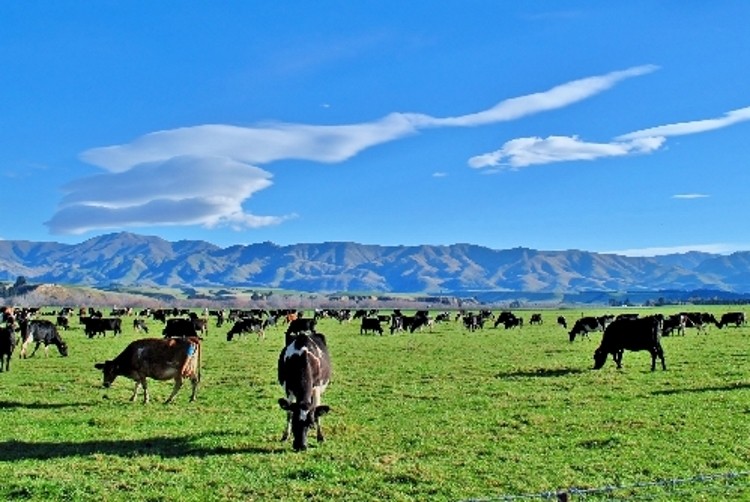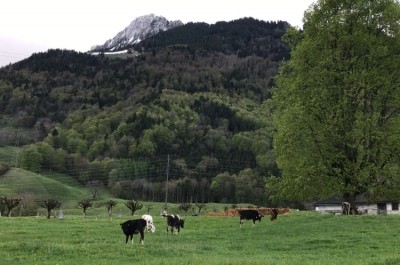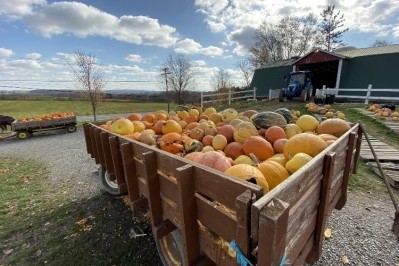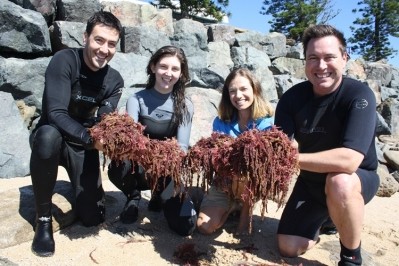AgResearch serious in solving greenhouse gas challenges
Kiwis show methane emissions research is more than hot air

It’s a question Kiwi farmers have been puzzling over for years, if ever they get a few moments spare.
While much public debate surrounding methane, the single biggest contributor to New Zealand’s agricultural greenhouse gases, has been about the degree to which it contributes to climate change, the science is now clear that its impact is significant.
A year ago, a modelling report released by the Parliamentary Commissioner for the Environment provided some potential starting points for planning, noting an estimated 10-22% reduction in methane emissions would be required by 2050 to avoid any further warming contributed by NZ above current levels.
One approach being put forward to achieve this goal is a simple reduction in livestock numbers, with the resulting economic impacts this would bring for the world’s biggest dairy exporter. Others are promoting the potential of science and technology to significantly reduce the emissions per unit of production.
The good news from the Land of the Long White Cloud, regarded globally as a beacon for its environmental consciousness, is that many farmers have been taking action themselves and, according to experts in the field, there are plenty of options at their disposal that have been scientifically proven to work.
Nitrate leaching
One, possibly the best of them all, unbeknown to many farmers, has already been put to extensive use.
Robyn Dynes, farm systems and environment science impact leader at AgResearch, New Zealand’s national agricultural and biotechnology research institute, said scientific evidence supports a correlation between lowering nitrate leaching and a reduction of farm methane and nitrous oxide levels.
There are of course exceptions to the rule, as is often the case in science. But scientists are now confident of what they have long suspected: that running a farming operation with lower nitrate leaching results in the associated benefit of lowering its greenhouse gas footprint.
It is only now, though, after several years of data gathering and research with much of it published in scientific journals, that the evidence is demonstrable.
“Balancing your environmental footprint is good farming practice. The vast majority of farmers get and aspire to that,” said Dr Dynes.
“We now know though that changes to improve water quality by reducing nitrate leaching will reduce greenhouse gas emissions. There are exceptions, but the exciting thing is we also know that doing really practical things like reducing the application of nitrogen fertilizers, managing supplementary feed supplies and homegrown feed sources, and then adjusting the stocking rate to the lower feed supply also reduces emissions, and that you can offset the subsequent impact on profitability and production by using tools that farmers already know well.”
These include holding onto cows with the highest breeding worth. Better genetics was also always going to be part of farming cleaner and greener. But scientists are now also confident that reducing stocking numbers should not automatically decrease production levels.
The key, Dr Dynes says, is maintaining and managing pasture quality and quantity levels through spring and early summer, and when finding themselves in a feed deficit, farmers will maintain the appetite drivers of their cows.
“That extra attention to detail pays off. It’s a balancing act, as it is every year. The crucial period is that calving to balance date phase, balance date being when feed grown exceeds demand from cows,” she continued.
“There are myriad variables, including monitoring when soil temperatures are high enough for nitrogen application. But with the right advice, farmers should be able to pull the right levers and lower their emissions.”
There are, as with any business, risks. Investing in a feed pad can improve water quality but either lead to no change in emissions, or in some instances an increase—an event known as pollution swapping.
To negate this risk, farmers need to make sure their effluent disposal strategies are sound, and managed correctly.
“The co-benefits we’ve found are in many instances already being done to meet water quality regulation, and we have data now that’s proving, on both demonstration and commercial farms, to maintain production,” said Dr Dynes.
“We need to keep reiterating the message on optimizing the total feed per hectare within the wider reality of farming, water quality and greenhouse gas emissions targets.”
Methane emissions
AgResearch has been working with local partners to identify promising ways to reduce methane emissions in other ways, through changes in farming systems, along with animal feed formulation, breeding and developing potential inhibitors and vaccines.
It has been making “steady progress” in a project to develop genetically modified ryegrass following field trials in the US. This has been shown in glasshouses to reduce methane emissions from livestock by up to 23%.
Not only has the ryegrass shown potential for greenhouse gas reduction, it also has features of reduced nitrate leaching, and its increased photosynthesis allows for faster growth and increased energy for the animal, as well as improved resistance to drought.
“We’re breeding the best novel traits into ryegrass cultivars that will best suit New Zealand growing conditions, and we’re also introducing genes into the plants that have simpler genetic patterns that will make future breeding programs easier,” said AgResearch principal scientist Greg Bryan, who was coordinating the field trials.
Elsewhere, its scientists have shown that livestock can be bred to produce less methane emissions. So far, they have bred sheep with a 10% difference in methane emissions, and it is believed this breeding approach can also be applied to cattle.
And the research agency has been working towards the development of inhibitors that can be applied directly to the livestock to reduce the amount of methane they produce.
To this end, cows have been given a vaccine against certain gut microbes that are responsible for producing methane as the animals digest their food.
Research to develop cost-effective inhibitors that reduce methane emissions by at least 20% in sheep and cattle—without reducing productivity—is now being developed by AgResearch, with a view to bring the technology to market.








